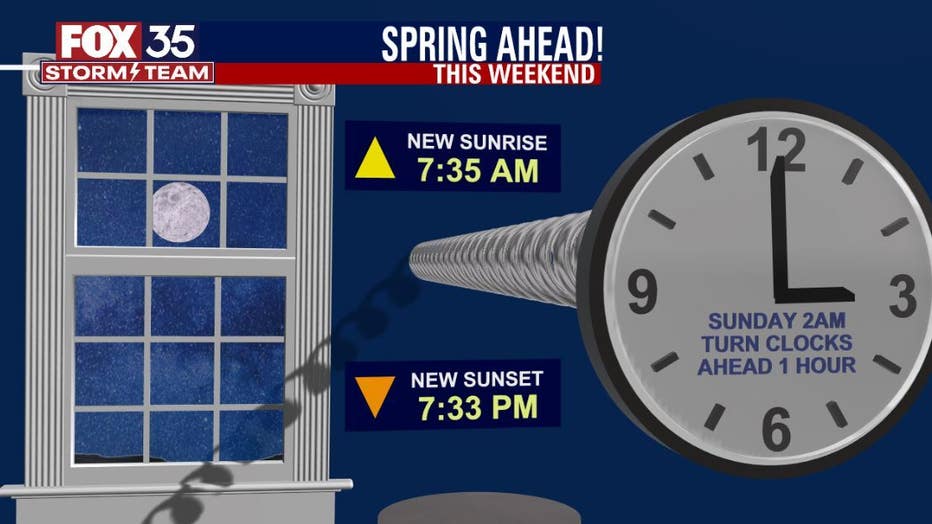What time the sun will rise, set as Daylight Saving Time begins

ORLANDO, Fla. - Daylight Saving Time began at 2:00 a.m. Sunday morning.
The clocks went from 1:59 a.m. to 3:00 a.m. So, if you haven't yet, make sure you set your clock forward one hour. Most electronic devices automatically spring an hour forward but some clocks will have to manually be changed.
With the change in time, mornings will be darker and days will be longer. The sun rose at 7:35 a.m. and the new sunset time is at 7:33 p.m.

RELATED: Florida Senators reintroduce bill to keep Daylight Saving Time year-round
According to the U.S. Department of Commerce, Daylight Saving Time lasts 238 days -- or about 65 percent of the year. The time change was formally introduced to the United States in 1918. Most of the country follows daylight saving time, but Hawaii, American Samoa, Guam, Puerto Rico, the Virgin Islands and the state of Arizona (with the exception of the Navajo Indian Reservation) does not.
Previously, Senator Rubio reintroduced the 'Sunshine Protection Act,' which would make Daylight Saving Time permanent across the country. This reportedly reflects the Florida legislature's 2018 enactment of year-round Daylight Saving Time. However, the change will not apply until there is a change in the federal statute.
RELATED: Pending stimulus check? Here's when your money could be released
Eleven other states — Delaware, Louisiana, Maine, Oregon, South Carolina, Tennessee, Utah, Washington, Arkansas, Alabama, and Wyoming — have passed similar laws.
Some people experience difficulty adjusting to the time change. Experts advise going to bed 15 minutes earlier each night to give your body a chance to adjust.
As always, you can watch the sunrise and sunset live on FOX 35 News.

